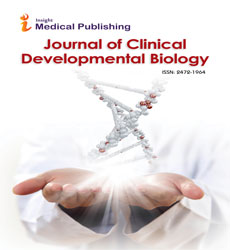Abstract
Immunohistochemical surrogate for molecular subtype of breast carcinoma and itâÃâ¬Ãâ¢s correlation with cyclin D1 expression: An Indian scenario
Various prognostic parameters have been described and validated for breast cancer, but the search for newer prognostic factors continues since existing parameters do not provide sufficient information for accurate risk assessment and tailor-made treatment planning. Thus, in the St. Gallen International Expert Consensus on primary therapy of early breast cancer, 2011, breast carcinoma was classified on molecular basis. Further this correlated well with immunohistochemical expression of the tumours and was called surrogate molecular classification. Studies on Cyclin D1 have shown inconsistent and conflicting results with regards to its role in prognosis. This study was aimed at classifying breast carcinoma using surrogate molecular classification into immunophenotypes, studying the immunohistochemical expression of Cyclin D1, and correlating Cyclin D1 as well as immunophenotypes with various parameters. Fifty cases of breast carcinoma were studied and their pTNM staging and Bloom Richardson (BR) grading done. Immunohistochemistry for Cyclin D1, ER, PR, Her2neu and Ki-67 was performed, and they were classified into immunophenotypes. Majority of the cases (40%) were Luminal A subtype, and least (16%) were triple negative. Cyclin D1 positivity was seen in 54% cases. Cyclin D1 showed statistically significant decreasing positivity with increasing grade as well as with increasing stage. On correlating immunophenotype with Cyclin D1, 75% Luminal A, 75% Luminal B, 20% Her2neu enriched, and 12.5% triple negative cases were positive for Cyclin D1. This decreasing trend was statistically significant. This is one of the initial studies from India analyzing immunophenotypes and correlating them with Cyclin D1 expression, in addition to other parameters. The significant association of Cyclin D1 with low stage, low grade and Luminal immunophenotypes may indicate that Cyclin D1 is a good predictive and prognostic factor that closely interacts with hormone signaling pathway. This may aid in investigating the response and clinical outcomes of treatment targeting Cyclin D1.
Author(s): Gireesha Rawal
Abstract | Full-Text | PDF
Share this

Google scholar citation report
Citations : 22
Journal of Clinical Developmental Biology received 22 citations as per google scholar report
Abstracted/Indexed in
- Google Scholar
- Directory of Research Journal Indexing (DRJI)
- WorldCat
- Publons
- Secret Search Engine Labs
Open Access Journals
- Aquaculture & Veterinary Science
- Chemistry & Chemical Sciences
- Clinical Sciences
- Engineering
- General Science
- Genetics & Molecular Biology
- Health Care & Nursing
- Immunology & Microbiology
- Materials Science
- Mathematics & Physics
- Medical Sciences
- Neurology & Psychiatry
- Oncology & Cancer Science
- Pharmaceutical Sciences
